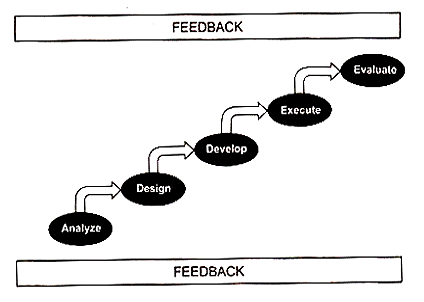HRIS: An Evaluation of its Cost and Benefits
April 3, 2025
 HRIS: An Evaluation of its Cost and Benefits
HRIS: An Evaluation of its Cost and Benefits
Human Resource Information System (HRIS) often described as Human Resource Management System, in the present scenario can serve as a crucial tool in providing a competitive advantage to the organizations. It involves measurability, better management of data and information, equally provide scope for measurement of key HR practices and its outcomes on employee productivity as…
 Systems Considerations in the Design of HRIS
Systems Considerations in the Design of HRIS
For implementing any Human Resource Information System (HRIS) project successfully, the system design requirements should be given utmost importance and it must have scope for customizations as per the requirements of the end users. The system should have various inbuilt provisions and be developed by carefully analyzing the end users/customers’ requirements and the technicalities involved…
 Talent Management and Corporate Strategy: Aligned for Driving Excellence
Talent Management and Corporate Strategy: Aligned for Driving Excellence
Talent Management in the contemporary scenario has received increasing importance from the corporate world and have been acknowledged as the key for providing a competitive edge and a leadership advantage by developing the top talents and resources in an organizations. Talent Management can be regarded as a process of acquisition, hiring and retaining the most…
HRIS is a systematic process of compiling different information for easily accessing them further. HRIS helps in training and development issues within a business. It facilitates performance evaluation of an employee understanding proper training methods, utilizing the knowledge imparted to employees in an accessible manner.
Training and Development - Strategic Implications and Learning Organization
The organizations in the present scenario give a lot of importance to effective knowledge acquisition and knowledge sharing, continuous improvement by evolving as learning organizations. As a result of which, Training Development function play a strategic role in improving the overall productivity and steering organizational growth as well. Rather, it would be appropriate to say that the TD strategies are implemented in alignment with the overall corporate strategies for realizing pre-defined organizational goals. For staying ahead of the competition, responding to the environmental changes proactively, TD is considered as an integral function by the organizations in the present scenario. Research shows that mostly organizations have a formalized approach to learning. Learning organizations provide continuous learning opportunities to reach organizational goals as well as individual performances.
There system Model of Training involves five stages in it, which is a cyclical framework essentially to achieve the desired purpose of standardizing performed works.

Source: http://www.yourarticlelibrary.com
This model lays emphasis on both the aspects of an organization i.e., the vision, mission and values of the organization and how they are executed.
Vision: A vision statement tells where the organization sees itself in the future down the line may be by bringing some internal change or fulfilling the present guidelines.
Mission: It helps to motivate the employees towards the achievement of the organization goals. It is general view of the employees or customers towards the organization.
Values: The values of the organization on a large basis depend on the environment prevailing inside and outside the organization.
The mission, vision, and values consider the organization as a whole.
The purpose of the Instructional System Development model is to solve the training problems on the basis of its needs. This model also helps to determine and develop the strategies to achieve training objectives. Firstly, it analyzes the need for the job and the persons who need the job. Accordingly, the planning is set featuring the program strategies, participants’ behavior during training, etc. In the development phase, the training course material, worksheets, presentation charts are prepared. Execution of the arrangements for the presentation including, halls, lighting, speakers, food, and others are done. Evaluation is obvious the last phase, where the training method is judged and necessary arrangements are done thereafter.
Metrics are measures used to verify the development of skills and knowledge gained by an individual through training program. It is also used to identify the satisfaction level of employees or trainees and whether they impart their skills to gain positive outcomes. Different organizations follow different metrics of training. According to Blake Henegan and Scott Drayton, there are generally five metrics to measure the training process. These five metrics helps to judge the process of training.
Training always involves estimation of costs and returns on investment. Costs are included in the training need analysis, training materials, design etc. there are various methods of cost benefit analysis:
ROI (in present) = Program Benefits/Costs * 100
It is important to identify the benefits of training on the basis of costs involved.
Learning management system (LMS) is an important tool which increases the effectiveness of training reducing the cost and time involved in the process. Learning management system systematically present the training motive and content, create the assignments and evaluate the process. They typically maintain and manage the documents needed in the training procedure. Most learning management systems follow software to upload the documents. In this way it is advantageous to both the trainee as well as the trainers.
Nowadays, colleges, schools, universities use learning management systems in online courses. It helps in record-keeping of the employees and handles all aspects of the training process. Various platforms like Java/J2EE, Microsoft.NET or PHP etc are used for development.
The implementation of HRIS in the area of Training and Development depend upon a gamut of factors which can be both organizational factors as well as employee oriented factors. Information is collected and analyzed on various parameters like employee personal information, pay scale, absenteeism rates, benefit analysis, etc from the HRIS database. Apart from this, various other factors like employee development needs, organizational culture, openness to feedback and change, cost or overall return on investment are taken into consideration, before implementing a robust HRIS framework in Training and Development.
Your email address will not be published. Required fields are marked *